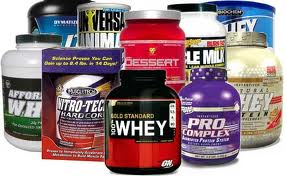- Like
- SHARE
- Digg
- Del
- Tumblr
- VKontakte
- Flattr
- Buffer
- Love This
- Save
- Odnoklassniki
- Meneame
- Blogger
- Amazon
- Yahoo Mail
- Gmail
- AOL
- Newsvine
- HackerNews
- Evernote
- MySpace
- Mail.ru
- Viadeo
- Line
- Comments
- Yummly
- SMS
- Viber
- Telegram
- JOIN
- Skype
- Facebook Messenger
- Kakao
- LiveJournal
- Yammer
- Edgar
- Fintel
- Mix
- Instapaper
- Copy Link
Structuring Nutrition & Conditioning Programs for Youth Athletes
We understand that there is an epidemic in North America regarding exercise and obesity in children and teenagers. Further still, we are also faced with designing training programs and nutritional strategies for today’s young athletes. Never has training and conditioning been more important for those looking to enter the professional sport arena while avoiding the increasing incidence of sports-related injuries of this demographic.
As such, these growing health concerns are met with a daunting task. It’s easy to say that children need to improve dietary habits and lead more active lifestyles that include exercise; or those athletes are working too hard and should really take a break; but the key consideration is HOW do we do this?
The first thing we need to do is admit to ourselves as parents, coaches, and health care providers that this thing exists.
Growth and Development
 For coaches, designing training programs for young athletes is not easy because this particular age demographic is multi-factorial and must account for such things as chronological vs. biological age and muscle and bone growth. Further, as certain training regimens become more well-understood and tailored, athlete safety is paramount so as to minimize acute injury risk; and more importantly, offsetting potential future chronic risk factors.
For coaches, designing training programs for young athletes is not easy because this particular age demographic is multi-factorial and must account for such things as chronological vs. biological age and muscle and bone growth. Further, as certain training regimens become more well-understood and tailored, athlete safety is paramount so as to minimize acute injury risk; and more importantly, offsetting potential future chronic risk factors.
It is understood that the age of an athlete is not always a good predictor for future performance because children, youths and teenagers all develop and mature at different rates. Skills like muscular strength, coordination, stamina, power and overall motor skills must be first measured at basal levels before more complex or technical movements are attempted.
Further, we understand that the transition period for boys and girls into maturity ranges from 9 – 15 years and 8 – 13 years respectively. During this transition time in additional to sexual changes, these individuals also see physiological changes – growth spurts – such as growth in muscle and height. This a challenging period of time as physical activity, specifically weight-bearing activity generates compressive forces on the body. While this is ideal for bone formation and growth, it can be detrimental for predisposing these individuals to injury.
For example, during this growth spurt (time of development), osseus changes to the bone tissue causes them to be temporarily weakened; muscle imbalances between flexor and extensor groups around joints occurs; and muscle-tendon units change as muscles attempt to catch up to lengthening bones.
Individuals expressing these changes (height, muscle girth, secondary sex characteristics such as voice change; breast and facial hair growth) may also begin to exude decreases in performance or report increasing soreness in muscles and joints (either unilateral or bilateral presentation). Coaches would be wise to design corrective exercise programs to protect athletes during this time through emphasizing flexibility, correcting muscle imbalances and decreasing training volume/frequency/intensity.
Socio-Economical Factors
 While it is all well-and-good for well-intentioned coaches to be on the alert for their athletes during this transitional time in their lives and modifying programs as needed, as well as outsourcing care to allied health care practitioners like chiropractors and physical therapists to co-manage care; we have still not answered HOW do we get kids to participate in sport activities and in resistance-exercise based programs through strength and conditioning.
While it is all well-and-good for well-intentioned coaches to be on the alert for their athletes during this transitional time in their lives and modifying programs as needed, as well as outsourcing care to allied health care practitioners like chiropractors and physical therapists to co-manage care; we have still not answered HOW do we get kids to participate in sport activities and in resistance-exercise based programs through strength and conditioning.
The focus for any program is towards building confidence, simplicity, teamwork and a level of fun for the athlete.
The acronym SMART is a good bench-marker for athlete success and exercise compliance used by coaches, which is paramount to children who have issues with exercise/sport participation from concerns like low motivation, weight issues and confidence, just to name a few.
SMART: Specific, Measurable, Attainable, Realistic and Timely
To conclude in this section, there are many ways to engage individuals in exercise. They do not have to be sport-based or through resistance-training or strength-based. They should focus on exposure of children to new and different games, while maintaining a level of bodily output congruent with weight reduction. Field games like Tag, for example, elevate the heart rate significantly.
Example of a Resistance Training Regimen:
| Training Variable | Introductory | Novice | Intermediate and Advanced |
| Intensity | Body weight – 50% 1RM (rep maximum) | 50 – 70% 1 RM | 60 – 85% 1 RM |
| Volume | 1-2 sets x 10-15 reps | 1-2 sets x 10-15 reps | 2-6 sets x 6-12 reps |
| Rest Intervals (mins) | 1 – 2 min | 1 min | 1 – 3 min |
| Frequency (days / week) | 2 – 3 | 2 – 3 | 2 – 4 |
Nutrition and Youth Athletes
 The decision factors affecting adolescent food choices are many and include, but are not limited to:
The decision factors affecting adolescent food choices are many and include, but are not limited to:
- Food cravings
- Hunger
- Appeal of food
- Convenience
- Time considerations
- Food availability
- Health benefits
- Mood
- Habit
- Body image
- Media
- Cost
Benchmarks for nutrient and energy intake among youths, adolescents and teens varies greatly – again owing to chronological age as well as biological (maturational) age. Since athletes expend more energy than their less-active counterparts, their nutritional requirements are slightly higher.
Energy
Adequate energy intake during childhood and adolescence is desirable to support normal growth and to provide additional energy for training requirements. While negative energy balance may be desirable for weight loss in the case of overweight athletes; it is not desirable for prolonged or severe energy-restricted diets for young athletes. Chronic energy-restricted plans can cause reduced height, delay puberty, cause menstrual concerns, poor bone health, increase injury incidence and risk for developing eating disorders.
Protein
Owing to growth and developmental processes, young athletes require higher protein requirements. This is especially true for those engaging in endurance and strength sports. To offset potential for sub-optimal protein levels, active athletes should be consuming anywhere from 1.2 – 2.0 g/kg BM/d, as noted by Lemon (1998).
Carbohydrates
It is always important to provide readily-available energy to athletes in the form of carbohydrates (CHO). Athletes in this demographic should consume three large meals with in-between snacks. CHO-sources should come from nutrient-dense, high-quality sources and avoid sources such as white breads, refined grains like cereals and those combined with high-fructose corn syrup. For athletes that put on weight easily, a balance of carbohydrates must be observed as these are often the food sources athletes can ‘prepare on their own’ (soft drinks, confectionary, chips, cereals, etc.).
Owing to the preference for high-sugar foods in this age group, oral hygiene should be addressed. Housekeeping rules such as brushing and flossing are essential. Further, rinsing out the mouth with water following consumption of these drinks as well as electing to choose citrus fruits will help to offset dental concerns such as cavities.
Fat
According to the Australian Dietary Guidelines for Children and Adolescents (2007), fat consumption should be roughly 30% of the total caloric intake with less than 10% coming from saturated fats. The largest concern for this demographic is in the consumption of the wrong kinds of fat as well as those fats contained within low-CHO foodstuffs. Finally, owing to the neurological development that continues to occur in this demographic, healthy fats such as avocado, olive oil, coconut oil, for example, will help to nurture and foster this development.
Supplementation
 If the energy intake of the individual meets energy expended then it is unlikely that supplementation is needed. However, if the athletic demands are high (i.e. football, soccer), or energy intake is restricted (i.e. making weight for sports like wrestling, dance), then attention to nutrition is paramount. Low-energy nutrition intake or infrequent dietary habits are hard to monitor. Fluctuations in weight, energy level, mood or random, lingering symptoms may indicate nutritional deficiency.
If the energy intake of the individual meets energy expended then it is unlikely that supplementation is needed. However, if the athletic demands are high (i.e. football, soccer), or energy intake is restricted (i.e. making weight for sports like wrestling, dance), then attention to nutrition is paramount. Low-energy nutrition intake or infrequent dietary habits are hard to monitor. Fluctuations in weight, energy level, mood or random, lingering symptoms may indicate nutritional deficiency.
Finally, bioavailability of nutrients in today’s food sources are not what they were decades prior. Families are more reliant on pre-packaged and processed foodstuffs that travel well but that are calorie-rich, nutrient poor. During these developing years, tastes change, and the turn towards fruits and vegetables often take a back seat to foods that promote sweeter tastes. It is for this reason that supplementation is necessary to catch what is missing from the diet. According to 1994 and 1995 studies by Sobal and Marquart; and Massad et al., 38% of high school students (n=742 across 9 schools in the US) reported using supplements. In their study the reported reasoning for taking supplements was for healthy growth, managing illness symptoms and for sports performance / endurance.
The Bottom Line
While this article is the tip of the iceberg on the subject, it’s a great starting point for many of you who’s primary objective is to help younger athletes achieve their health & fitness goals via a fun and safe environment. If you didn’t know before, you now know that training programs and nutritional strategies designed specifically for youth athletes is a must. Because this particular demographic fall in different stages of development, it’s imperative to create custom programs that are not only efficient but which also minimize the risk of injury and offset potential future chronic risk factors.
References:
1. Australian Institute of Sport Nutrition fact sheets. At http://www.ausport.gov.au/ais/nutrition/factsheets
2. Baechle, T. R & Earle, R. W. 2008. Essentials of Strength Training and Conditioning (3rd ed.). Champaign, IL. Human Kinetics.
3. Grabert, D. 2014. Structuring a Resistance Training Program to Combat Childhood Obesity. NSCA. At: http://www.nsca.com/Education/Articles/Structuring-a-Resistance-Training-Program-to-Combat-Childhood-Obesity/
4. Lemon, P.W. 1998. Effects of exercise on dietary protein requirements. International Journal of Sports Nutrition. 8: 426 – 447.
5. Massad, S., Shier, N., Koceja, D. & Ellis N. 1995. High school athletes and nutritional supplements: a study of knowledge and use. International Journal of Sports Nutrition. 5: 232 – 245.
6. Sobal, J. & Marquart. L. 1994. Vitamin / mineral supplement use among high school athletes. Adolescence. 29: 835 – 843.
7. Thompson, J.L. 1998. Energy balance in young athletes. International Journal of Sports Nutrition. 8: 160 – 174.
About Erik Uuksulainen
True North Chiropractic Erik Uuksulainen is a board certified doctor of chiropractic who specializes in working with athletes, both at the recreational as well as collegiate level. Dr. Erik holds a MS in Clinical Nutrition (2010). In 2004, he graduated from the University of Guelph, Canada, with a BSc in Human Kinesiology.

